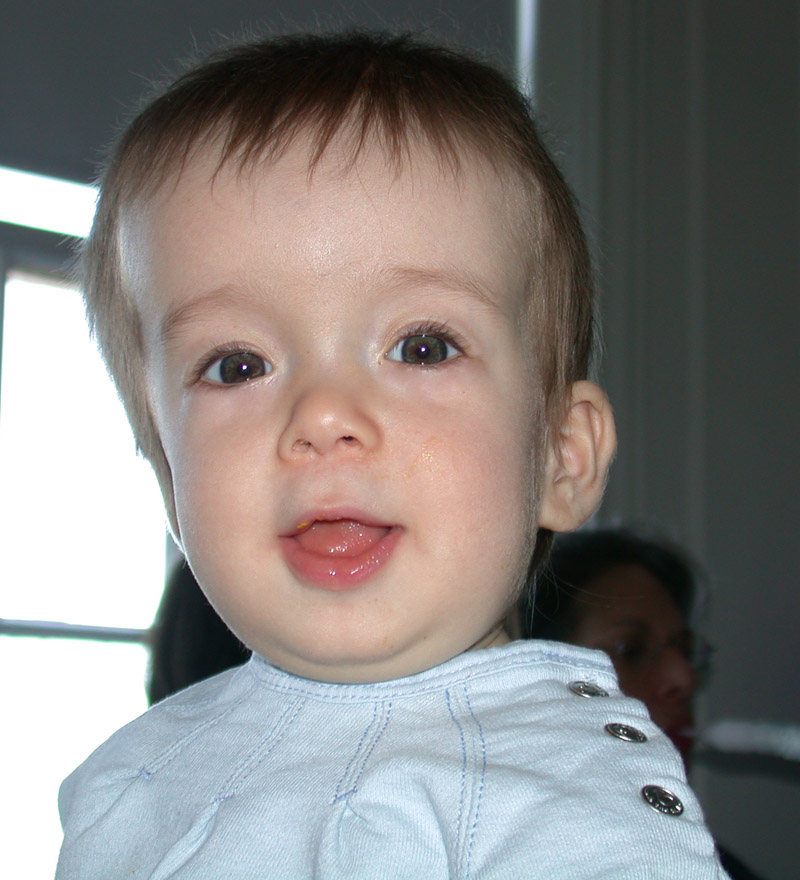Craniosynostosis

Craniosynostosis is the premature closure of one or more of the joints that connect the bones of a baby's skull (cranial sutures). Normally, the bones remain separate until about age 2, while the brain is growing. They then fuse together and stay connected throughout life. The closure is premature when it occurs before brain growth is complete.
Symptoms and severity vary depending on how many sutures close prematurely. For example, if only one closes prematurely (which is most common), brain growth may continue in other parts of the skull, leading only to an abnormally-shaped skull and no other health problems or complications. If multiple sutures close prematurely, brain growth can be restricted. This can lead to increased pressure in the skull, impaired brain development, seizures, blindness, and/or intellectual disability.
Craniosynostosis may occur as a single abnormality (isolated craniosynostosis) or it may occur as one feature of one of many syndromes. Most cases of isolated craniosynostosis occur randomly (sporadically) and have no known cause. In some cases, isolated craniosynostosis is due to a mutation in any of several genes, with autosomal dominant inheritance. When craniosynostosis is a feature of a larger syndrome (syndromic craniosynostosis), the cause and inheritance pattern depend on the syndrome the person has. However, most syndromic causes of craniosynostosis are autosomal dominant. Craniosynostosis can also be associated with a metabolic disease such as rickets, or hyperthyroidism.
Treatment for craniosynostosis depends on the severity in each child and may involve surgery in infancy to relieve pressure within the skull, allow for brain growth, and improve the appearance of the shape of the head. However, not all children with craniosynostosis will need surgery. The long-term outlook depends on how many sutures are involved and whether the child has a larger syndrome or other health problems. Children who have surgery and are otherwise healthy generally do not experience long-term complications, especially when only one suture is involved.
Symptoms and severity vary depending on how many sutures close prematurely. For example, if only one closes prematurely (which is most common), brain growth may continue in other parts of the skull, leading only to an abnormally-shaped skull and no other health problems or complications. If multiple sutures close prematurely, brain growth can be restricted. This can lead to increased pressure in the skull, impaired brain development, seizures, blindness, and/or intellectual disability.
Craniosynostosis may occur as a single abnormality (isolated craniosynostosis) or it may occur as one feature of one of many syndromes. Most cases of isolated craniosynostosis occur randomly (sporadically) and have no known cause. In some cases, isolated craniosynostosis is due to a mutation in any of several genes, with autosomal dominant inheritance. When craniosynostosis is a feature of a larger syndrome (syndromic craniosynostosis), the cause and inheritance pattern depend on the syndrome the person has. However, most syndromic causes of craniosynostosis are autosomal dominant. Craniosynostosis can also be associated with a metabolic disease such as rickets, or hyperthyroidism.
Treatment for craniosynostosis depends on the severity in each child and may involve surgery in infancy to relieve pressure within the skull, allow for brain growth, and improve the appearance of the shape of the head. However, not all children with craniosynostosis will need surgery. The long-term outlook depends on how many sutures are involved and whether the child has a larger syndrome or other health problems. Children who have surgery and are otherwise healthy generally do not experience long-term complications, especially when only one suture is involved.